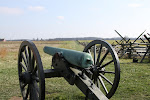You may appreciate your washer, dryer, and Tide soap pods more after reading this excerpt from the memoirs of Willie Lee Pace Dillon. Born in 1885, the fourth of twelve children of William and Rebecca Pace, she wrote this recollection of 1890s clothes washing in 1956.
“Lye soap was usually made in the winter and late spring when good oak or hickory wood ashes from the fireplace were plentiful, as well as surplus hog grease and bones. An ash hopper was constructed by placing split boards on a plank fence two feet from the ground, slanting downward and resting on a brace, then setting a bottomless barrel onto the boards. This was filled with ashes and clear water was poured into a basin-like hole at the top in the ashes. The water passed through the ashes, separating the invisible lye which would drain into a vessel at the bottom of the hopper. Usually I was the one assigned the duty of pouring on the water and emptying the dripped lye into the large pot for making the soap. By mixing and heating the lye and greases a cheap, good laundry soap would be made. The soap was dipped from the pot while it was hot and poured into a non-leaking barrel to be used as needed after it cooled.
“Buttons could easily be broken in the family wash, as we were then using a 'battling block and stick' to remove excess dirt before boiling the clothes in a large outdoor three-legged black wash pot with fire underneath. The 'battling block' was a large, sawed tree block standing upright near the tubs. Well-soaped wet garments were placed on it one at a time and "battled" with a paddle-like stock, forcing out the dirt and spattering the 'battler' with dirty water. Usually I was the battler while my two sisters tended the tub and pot.
“I also tended the pot fire. The clothes were boiled in the pot and required frequent punching down with a stick. Then they were lifted into a tub full of clean water and rinsed through two other large wooden tubs of water before hanging them on the wire line and backyard fences. We used our first rub-board [washboard] in the early 1890's.”

















No comments:
Post a Comment